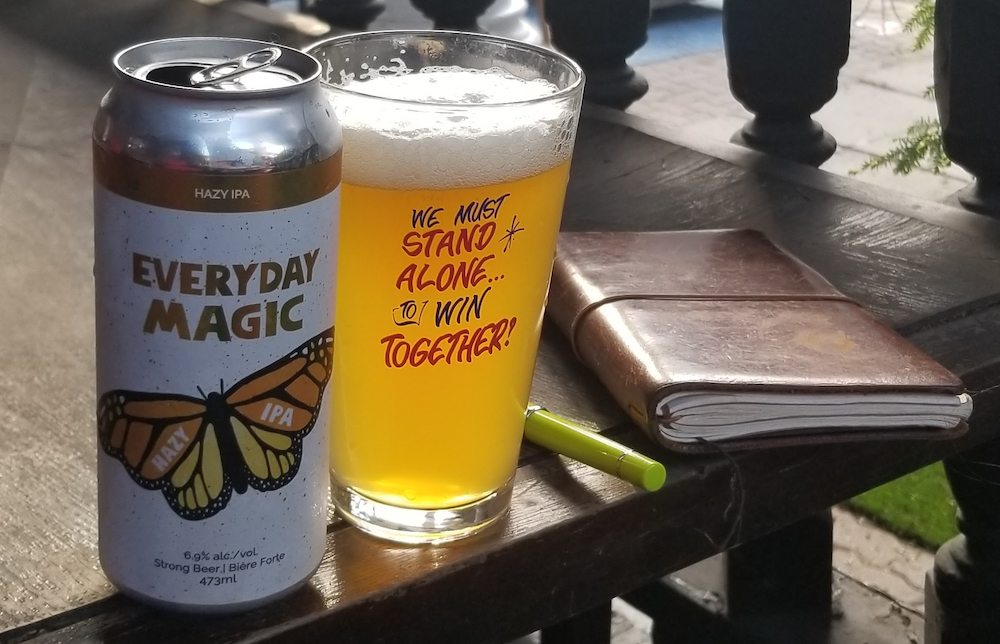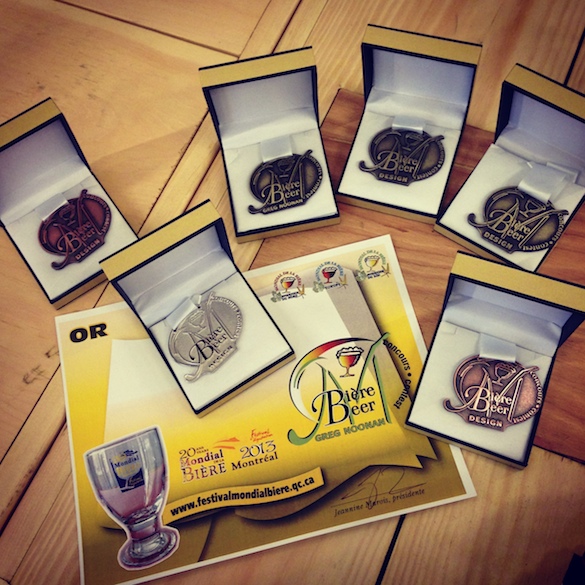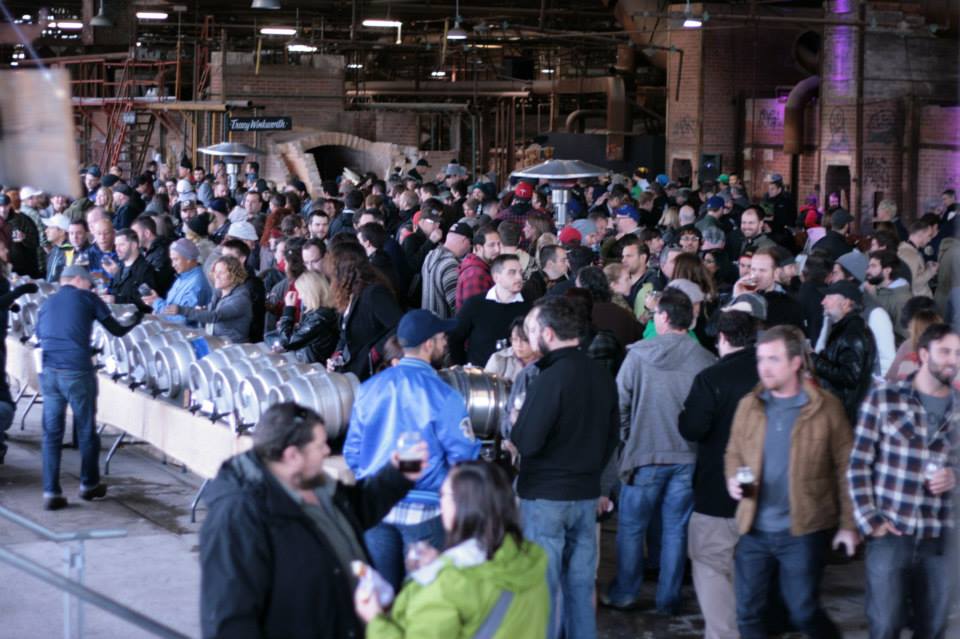
Oh, hello. I’m the other beer writer for Good Food Revolution.
For my first article I was asked to create a sort of introductory piece to myself and that I could approach the subject in any way I fancied. I usually like my fancies, and especially my flights of them, but for a while I found myself rather stumped as to what to talk about. I’m quite good at writing about other people, but myself? I don’t know, man.
I’ve been writing about beer for over ten years now, starting with an award-winning blog and moving my way up the ranks to become a contributor to several publications, a beer judge, a syndicated columnist, a podcast host, and a co-author of two extensive beer guides. I’ve had more beers than most people I know and my memory, palate, and experience as an industry observer has served both myself and my readers well.
If there’s one thing I learned in all that time it’s that if you’re going to drink someone’s beer and want to understand it you should at least get an idea of what they’re about and how they see the thing. Honestly, it’s a practical rule for getting to know anybody, as who are we without the personal philosophies that guide us?
So with that, here are three ways that talk about what I think about this wonderful, beautiful beverage called beer.
Beer is Memory
In Swann’s Way, the first volume of French author Marcel Proust’s early 19th century novel À la recherche du temps perdu (Remembrance of Things Past/In Search of Lost Time), the narrator details a moment in which eating a madeleine dipped in tea brought forth an instance of involuntary memory, reminding him of the time when he would have a similar snack as a child in Combray with his aunt. As Proust writes in this comma-heavy excerpt:
“But when from a long distant past nothing subsists, after the people are dead, after the things are broken and scattered, still, alone, more fragile, but with more vitality, more unsubstantial, more persistent, more faithful, the smell and taste of things remain poised a long time, like souls, ready to remind us, waiting and hoping for their moment, amid the ruins of all the rest; and bear unfaltering, in the tiny and almost impalpable drop of their essence, the vast structure of recollection.”
The moment with the madeleine is one of the most memorable parts of the novel for good reason. We’ve all had similar instances in our lives when taste has transported us to a specific time and place hidden away in the depths of our memories. And while this extends to any kind of food or drink, I find that beer has the largest track record for recollection in me. From having an ice cold PBR with my grandfather in his kitchen, my mother holding me as a toddler, letting me try Guinness for the first time at a pub in Cleethorpes, to just five years ago drinking a glass of Oerbier on the busy streets of Rome at night, tired, jetlagged, and excited for the adventure of a new place to explore. Hell, whenever I have a sip of the beer that turned me into a beer fan, Chimay Première, I’m immediately taken to 2008 and the long-since vacated queer anarchist commune I first tried it in.
Memory is a powerful force, and beer can take you to all sorts of specific times of celebration, sadness, or even simplicity. Specific brands can be the instigator (say what you will about the macro beers, but the consistency of some brands over the years is to be admired), or just a certain style of beer. But either way revisiting precious memories with beer, and making new ones, is a wonderful experience.

Beer is Travel
I don’t know about you, but the pandemic has given me an overwhelming case of wanderlust. All of my friends are scattered throughout the globe and I want to see every single one of them. It would also be nice to get the chance to go somewhere new. For now though, the closest approximation to travel comes in the form of taste via the import section of my local liquor store. After all, one of the first rules of getting an authentic travel experience is to eat what the locals eat. Drinking is no different.
Starting with the basic ingredients, beer can be hyper specific regarding location. A good Czech pilsner is practically defined by the soft water profile local to the city of Plzeň. German lagers and altbiers would be vastly different without the noble hop variety of Hallertau, named for the region in Bavaria it’s grown.
And it’s fun to see a style that originated in a certain region pair marvellously with the local food. A classic gueuze, with its dry tartness and sharp acidity, goes wonderfully with the famous but simple Belgian dish moules-frites or with goat cheese brought in from Belgium’s close neighbours in France.
Beyond the specific ingredients and styles, a beer gives you a snapshot of a brewery and its relationship to the world. Going to a taproom or bar in a new area and asking the age-old question of “what’s good?” opens up the chance to see what the people around you are enjoying. You can learn a hell of a lot about a place by drinking its beer.
Beer is Fun
It’s important to note, after all of the think pieces, online arguments, and navel gazing surrounding beer that it can actually be quite a silly and fun beverage most of the time.
I mean, the drink has arguably existed since the dawn of civilization. Even with the simple four ingredients of hops, malt, water, and yeast we are still coming up with new ways to make it, switching out ingredients, adding new ones, altering the amounts that are put in, and just finding unique ways to brew, ferment, age, and enjoy it. We have the ability to drink the longstanding beers that have stood by us since the 1940s while also experiencing a one-off beer that will be forgotten within a week.
Because of the relative ease of making small batch one-off beers, brewers have a lot of chances to get silly with experimentation. Want a beer with edible glitter? Throw it in the fermentation tank! Think it’ll be funny to brew a green sour beer with gelatin so you can make a Futurama “Slurm” reference? Go forth and realize your dream, friend! Will it be good? Probably not. Is it fun to try anyways because it’s goofy? Oh, yes. Will customers buy it simply for the fun novelty? Absolutely.
One can’t help but laugh at the breadth of range beer has.
—
In closing, I know that discussing the finer points on beer styles and technique are important but I really can’t stress enough that in order to better understand beer you have to know that beer is as much about its surroundings as the drink itself. Beer is about moments in time. Beer is about discovering new lands. Beer is about not being entirely serious. Most importantly though, beer is about us and the stories we create in this world as it quietly sits in the background.







